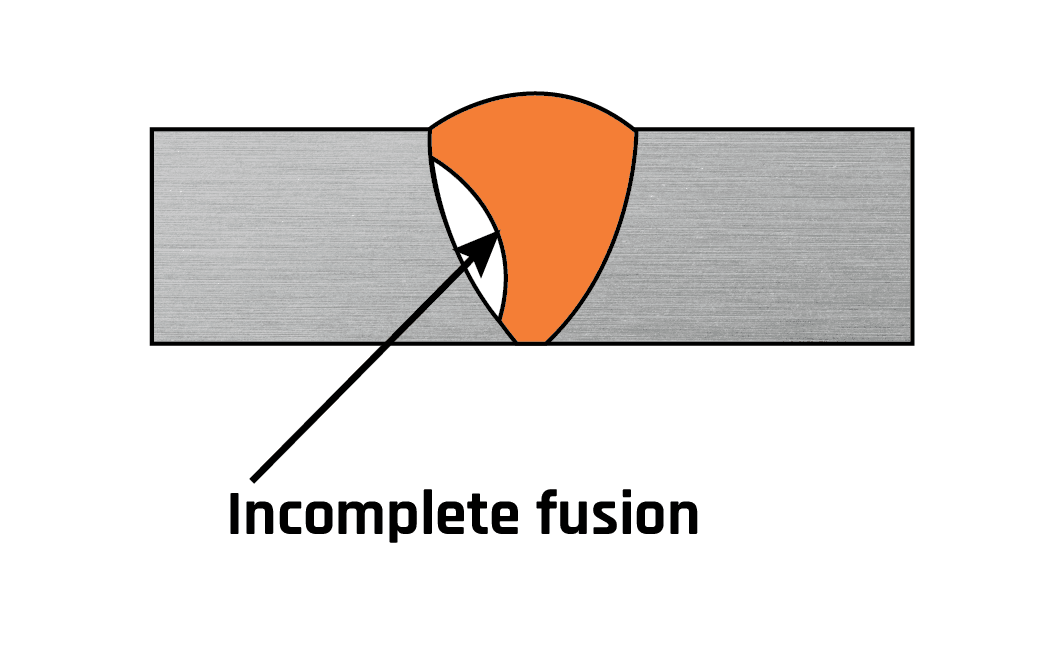Complete Guide to Preventing Weld Undercut: Tips and Techniques
Vital Tips for Welders: Preventing Undercut Welding and Ensuring Stronger Weld Joints
In the realm of welding, attaining strong and sturdy weld joints is the foundation of creating high-grade work. Nonetheless, one usual obstacle that welders typically experience is undercut welding, which can jeopardize the honesty of the weld joint. By understanding the aspects that add to damaging and executing the right strategies and preventative measures, welders can successfully stop this concern and ensure the durability and toughness of their welds. Let's discover some necessary suggestions that can aid welders browse this difficulty and elevate the high quality of their welding jobs.

Understanding Undercut Welding
Undercut welding is a typical welding problem that takes place when the weld metal fails to effectively fill up the groove and results in a groove-like clinical depression along the weld bead. This problem compromises the weld joint, making it prone to splitting and failure under tension. Undercutting can be triggered by various factors, including extreme welding present, high welding speed, improper electrode angle, incorrect electrode dimension, and poor welding technique.
One of the primary factors for undercut welding is an inequality between the welding existing and the welding speed. If the welding current is as well high or the welding speed is as well quick, the weld steel may not effectively fill up the groove, resulting in undercutting. In addition, utilizing an electrode that is too big can lead to a similar outcome, as the excess steel can not appropriately move right into the groove.
To avoid undercut welding, welders need to ensure they are using the correct welding specifications, maintain an ideal electrode angle, choose the appropriate electrode dimension, and practice correct welding methods. By addressing these elements, welders can minimize the threat of undercutting and produce more powerful, a lot more trustworthy weld joints.
Correct Welding Method
Effective welding technique plays a crucial function in making sure the top quality and stability of weld joints. One basic facet of appropriate welding method is keeping the right angle and range in between the welding weapon and the workpiece.
Additionally, a steady and constant hand movement is important for producing strong and resilient weld joints. Welders must go for smooth, consistent movements to make certain also circulation of the weld product. Proper manipulation of the welding gun and filler material is likewise vital to achieving optimal penetration and fusion.
Additionally, controlling the heat input and selecting the appropriate welding parameters based upon the product being bonded are important consider attaining premium welds - Preventing weld undercut. Welders must follow the advised settings supplied by welding procedure specifications and readjust them as required based upon the certain demands of the project. By grasping proper welding strategies, welders can significantly boost the strength and reliability of their weld joints
Picking the Right Electrode
Maintaining the correct angle and range between the welding weapon and the workpiece is essential when considering the relevance of selecting the best electrode in welding applications. The selection of electrode plays a critical role in establishing the high quality and toughness of the weld joint. Electrodes are available in numerous types, each created for specific functions and products.
Firstly, picking the appropriate electrode diameter is essential. Thinner electrodes appropriate for welding slim materials, while thicker electrodes are better for thicker products and greater heat applications. Matching the electrode diameter to the density of the work surface helps accomplish a well balanced weld.
Secondly, understanding the material structure of the electrode is essential. Different electrodes are developed for welding certain products like steel, stainless-steel, light weight aluminum, or cast iron. Making use of the correct electrode material guarantees great combination and lessens the threat of issues in the weld.
Lastly, considering the welding position and technique is essential when selecting the electrode type. As an example, specific electrodes are better fit for above or vertical welding placements, while others work well for level or horizontal placements. Selecting the best electrode based on the welding technique boosts the total weld high quality and integrity.
Preparing the Base Steel
To make certain a successful welding procedure, what initial actions should be taken when preparing the base metal for welding? Furthermore, any existing weld material or deposit from previous welding ought to click here to find out more be gotten rid of to guarantee a tidy surface for the new weld.

Performing Post-Weld Evaluations

After conducting these evaluations, welders need to contrast the outcomes versus industry standards and project demands to make sure that the weld joint satisfies all essential standards. Any kind of inadequacies or deviations discovered during the post-weld evaluation ought to be quickly dealt with with proper restorative procedures to ensure the weld's stability. By vigilantly carrying out post-weld evaluations and quickly dealing with any issues, welders can promote the top quality and dependability of their work, ultimately adding to the safety and security and durability of the welded structures.
Verdict

Finally, avoiding undercut welding and guaranteeing more powerful weld joints call for a combination of proper welding strategy, selecting the right electrode, preparing the base steel properly, and conducting post-weld examinations. By comprehending the root causes of undercut welding and applying the needed precautions, welders can generate premium weld joints that meet sector standards and make certain the structural honesty of the welded parts.
Undercut welding is find a typical welding issue that happens when the weld steel fails to effectively fill the groove and results in a groove-like clinical depression along the weld bead (Preventing weld undercut). Damaging can be created by different variables, including extreme welding current, high welding speed, inappropriate electrode angle, incorrect electrode size, and inadequate welding technique
One of the primary factors for undercut welding is an inequality between the welding present and the welding rate. If the welding current is too high or the welding speed is as well quickly, the weld metal may not adequately fill up the groove, leading to damaging.Keeping the correct angle and distance between the welding weapon and the work surface is fundamental when considering the value of selecting the appropriate electrode in welding applications.